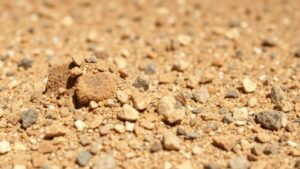Using Chemical Assays to Determine Ore Quality Before Processing
Using Chemical Assays to Determine Ore Quality Before Processing
The mining industry faces increasing pressures to maximize the efficiency of ore extraction while minimizing environmental impact. One crucial step in this process is determining the quality of ore before processing. Chemical assays play a key role in this evaluation, providing essential data that guides decision-making. This article explores the methods, applications, and importance of chemical assays in assessing ore quality.
Understanding Chemical Assays
A chemical assay is a laboratory procedure used to quantify the presence of specific metals or minerals within a sample. This technique typically involves dissolving the ore sample in a solvent and then applying methods such as spectroscopy, chromatography, or titration to identify and measure elemental concentrations.
Common types of assays include:
- Fire assay: Widely used in precious metals testing, particularly for gold and silver.
- AAS (Atomic Absorption Spectroscopy): Suitable for determining metal concentrations in various matrices.
- ICP (Inductively Coupled Plasma): Effective for multi-element analysis at trace levels.
The Importance of Ore Quality Assessment
Determining the quality of ore through chemical assays is critical for several reasons:
- Resource Efficiency: Accurate assays help in assessing how much of a particular metal is available, allowing for more efficient mining operations.
- Cost-Effectiveness: By understanding the ore quality, companies can avoid investing in unviable projects.
- Environmental Responsibility: Proper assessments help reduce the ecological footprint by minimizing waste generated from unprocessed low-quality ores.
Methods of Conducting Chemical Assays
The process of conducting a chemical assay typically consists of several steps:
- Sample Collection: Representatives samples must be collected from the ore body to ensure the assay reflects the ores overall quality.
- Preparation: Samples are crushed, ground, and sometimes chemically treated to isolate the desired elements.
- Assay Procedures: Specific assay methods are applied based on the composition and concentration of elements in the ore.
- Data Analysis: The results are then analyzed and reported, guiding further steps in the mining process.
Real-World Applications of Chemical Assays
Several case studies illustrate the effectiveness of chemical assays in mining operations:
- Newmont Mining: Used fire assays extensively for gold analysis, enabling more efficient resource allocation and extraction strategies.
- Rio Tinto: Useed ICP methods to analyze copper ores, resulting in improved recovery rates and lower processing costs.
Challenges and Considerations
While chemical assays offer many benefits, there are challenges associated with their implementation:
- Sample Homogeneity: Variability in ore samples can lead to inaccurate results, requiring comprehensive sampling strategies.
- High Costs: Some assay methods may require significant investment in equipment and infrastructure.
- Environmental Concerns: Use of certain chemicals in assays may pose disposal issues, demanding adherence to environmental regulations.
Actionable Takeaways
For mining companies looking to optimize ore processing, embracing chemical assays as a means of quality assessment is essential. Here are key actionable takeaways:
- Invest in advanced assay technologies to improve accuracy and reliability.
- Develop thorough sampling protocols to ensure representative results.
- Regularly review assay methodologies to align with industry best practices and environmental standards.
To wrap up, chemical assays are a fundamental component of ore quality assessment, directly influencing operational efficiency, cost-effectiveness, and environmental sustainability in the mining industry.



